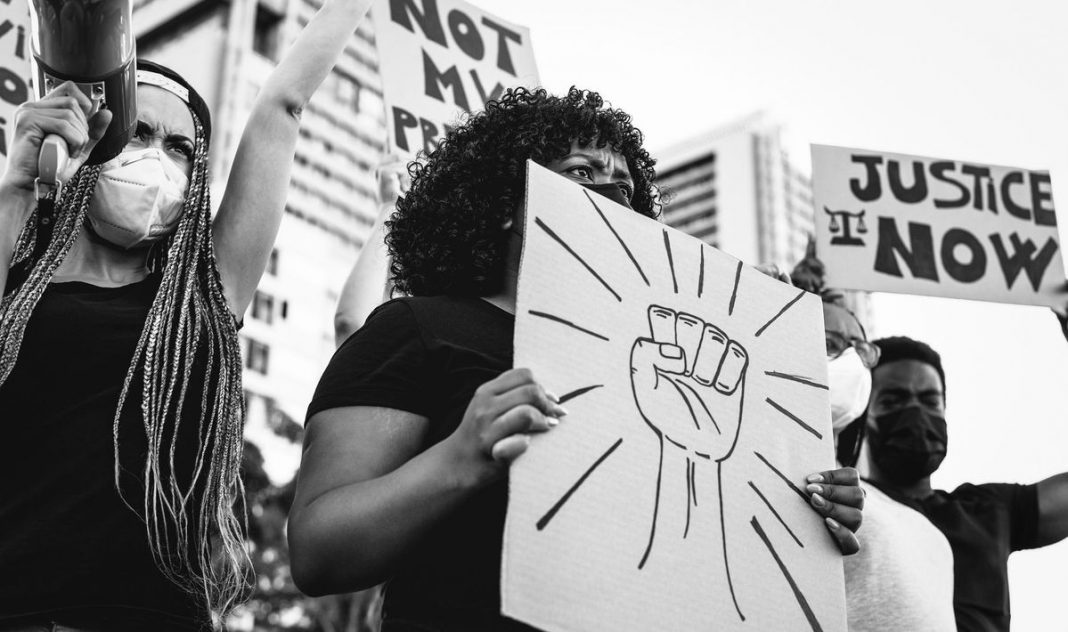
protest international activist movement protesting against racism and fighting for justice – … [+]
getty
Deloitte’s latest piece of research into racial equity — summarized in “The Equity Imperative” report — couldn’t be more timely. With many diversity and inclusion (D&I) teams still finding their feet after the call for change from the Black Lives Matter movement and the racial inequity further exacerbated by Covid-19, companies know there is more attention than ever on D&I. “The disparate impact of the pandemic on Black and other marginalized people have really brought things into focus in a way that we could not turn away from,” says Joanne Stephane, Principal, Human Capital, Deloitte Consulting. “People came together and demanded better, they demanded that organizations step up and make commitments.”
“There is no guarantee that today’s commitments to racial equity and urgency will deliver meaningful change if business leaders don’t take a more comprehensive view of how change will happen,” says Janet Foutty, executive chair of the board, Deloitte US. “As challenging as it will be to tear down age-old systems and remake long-held beliefs, getting to equity requires that business leaders have a clear-eyed view of the society we want to achieve, as well as the risks that could arise if we fall short.”
What could those business risks look like? The Equity Imperative outlines four future scenarios that may emerge in the next decade, ranging from minor to startling outcomes. While these scenarios outline how the journey toward racial equity could evolve on a societal level, businesses would do well to think about how broad systemic changes impact the expectations and makeup of their incoming workforce. For example, the report shares how 94% of GenZ expect companies to take a stand on important societal issues.
Deloitte’s research clarified the opportunity many businesses have known was there, and that is the need for businesses to move beyond tokenistic inclusion efforts. “In no other area of the business would we label leaders as successful if they made a good effort but fell short of their financial or operational goals,” says Stephane. “If that happened, we would dig deeper and find out what went wrong. It’s the same thing with equity.”
It’s time for companies to play a larger role on the road to achieving true equity. However, many D&I teams face time, budget, and resource constraints. Additionally, when the scale of the problem is systemic, change must happen on an enterprise-level — which is a large remit to place on D&I teams. They need guidance on how to kickstart the culture changes needed to create a more inclusive and equal organization.
Three actions companies can take now to move toward equity
Deloitte has created a systems-based view for how businesses can enact change with their Equity Activation Model, outlined in detail in the report. The model focuses on workforce, marketplace, and societal spheres of influence. Within the workforce, it identifies access, enablement, and advancement as key activators. These areas are a great prioritization tool for D&I teams to use to focus their efforts to move toward equity. These areas of focus are to use your data, audit your culture, and make commitments to change the rules.
Use your data
It’s a common myth that D&I cannot be measured, but Stephane refutes that. “The place to start is with the data. The data tells a story about how things work at the organization.”
Teams can ask smart questions to get this vital information. Who gets promoted? How are the results different by identity groups? What is the rate of advancement by identity groups? At which point of the hiring process are you losing people? At which point in their career or different identity groups entering the organization?
Audit your culture
The values, beliefs, behaviors, and ways of working within an organization come together to create a company’s culture. “When we look at the Equity Activation Model, our focus is on the behaviors, the systems, and the processes. But in order to have the actions and behaviors be sustainable, we have to address the underlying beliefs and orthodoxies. This is the toughest part, so start with your champions, supporters, and allies.”
Companies can also conduct a culture audit. This exercise can help identify what is unique about your culture and how to protect it, but also acknowledges the gaps between who you are and who you want to be. In this case, the gaps between your ideal state of equity, and where you currently are.
Make commitments to change the rules
“If we’re going to change things, we have to change the rules of the game. The reason we appreciate leaders and activists is that they’re able to influence how the rules are made. But it’s the rules that need to change,” says Stephane. We’re already starting to see progress made on this front. Salesforce has launched its own Racial Equality and Justice Task Force. General Motors has pledged $10 million to support organizations promoting inclusion and racial justice.
Ask your leaders to make a public commitment outlining the actions they are going to take to start to move the needle.
Equity is not an action, it is an outcome
“Equity is achieved when all marginalized groups have the same power, access, and influence as non-marginalized groups,” says Stephane — and she is optimistic about the future. “It will take some time for us to start to see the outcome of the actions businesses take. But right now, with the combination of events, attention, education, and clarity on systemic inequality, I’m very excited about how organizations have committed to taking action for real, sustainable change.”




